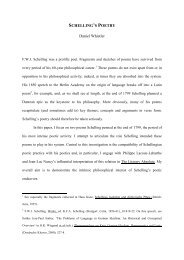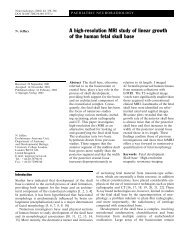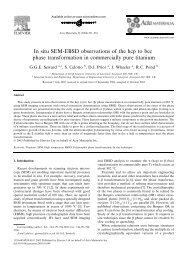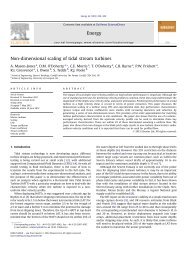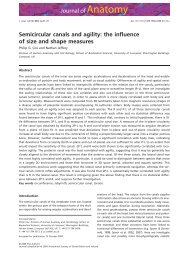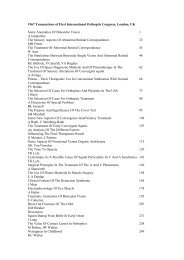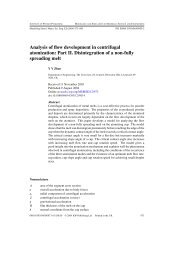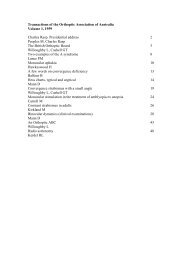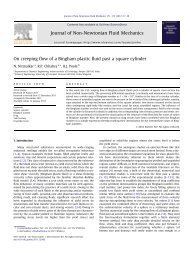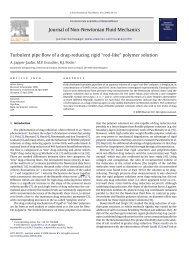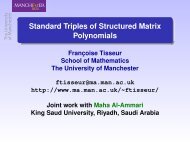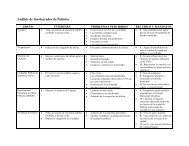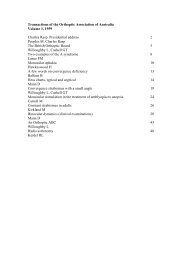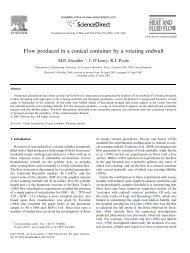Beyond the Pre-Pottery Neolithic B interaction sphere - University of ...
Beyond the Pre-Pottery Neolithic B interaction sphere - University of ...
Beyond the Pre-Pottery Neolithic B interaction sphere - University of ...
Create successful ePaper yourself
Turn your PDF publications into a flip-book with our unique Google optimized e-Paper software.
90 J World <strong>Pre</strong>hist (2006) 20:87–126<br />
Fig. 2 The ‘‘PPNB <strong>interaction</strong> <strong>sphere</strong>’’ (redrawn after Bar-Yosef, 2001a)<br />
(albeit loosely unified) cultural phenomenon. These include lithic technology, <strong>the</strong> ubiquitous<br />
presence <strong>of</strong> rectangular architecture, <strong>the</strong> widespread occurrence <strong>of</strong> ‘‘skull cult’’<br />
rituals and <strong>the</strong> gradual consolidation <strong>of</strong> agropastoral economies (Bar-Yosef & Belfer-<br />
Cohen, 1989; Cauvin, 2000; Harris, 2002; Kuijt & Goring-Morris, 2002; Verhoeven,<br />
2002a). The challenge that emerges is how to interpret <strong>the</strong>n <strong>the</strong> PPNB. What gave rise to<br />
this phenomenon? At a more <strong>the</strong>oretical level this question poses a fur<strong>the</strong>r challenge: how<br />
to integrate <strong>the</strong> observed areal and sub-regional variation without at <strong>the</strong> same time disrupting<br />
<strong>the</strong> potential <strong>of</strong> composing regionally meaningful narratives. I will suggest in this<br />
article that currently established <strong>the</strong>oretical approaches such as centres <strong>of</strong> origins/core<br />
areas, <strong>interaction</strong> <strong>sphere</strong>s, polycentric and core-periphery models, are unlikely to provide<br />
satisfactory insights into a <strong>Neolithic</strong> world, where various socio-economic <strong>interaction</strong>s,<br />
acculturation and demic diffusion were all active at different temporal and spatial scales. I<br />
will argue that an alternative approach should aim at identifying more precisely <strong>the</strong> specific<br />
local socio-economic contexts <strong>of</strong> inter- and intra-group <strong>interaction</strong>s and population<br />
movements. This approach focuses on <strong>the</strong> nature <strong>of</strong> Early <strong>Neolithic</strong> social organization<br />
and, in relation to it, <strong>the</strong> operation <strong>of</strong> exchange as a socially situated process, which was<br />
integrally related to <strong>the</strong> negotiation and reproduction <strong>of</strong> group identities. I suggest that such<br />
a <strong>the</strong>oretical and working framework may open avenues for a more in-depth understanding<br />
<strong>of</strong> <strong>the</strong> historical dynamics <strong>of</strong> Early <strong>Neolithic</strong> societies compared to earlier approaches<br />
which have been overwhelmingly inspired by <strong>the</strong> culture-history paradigm.<br />
123



